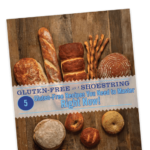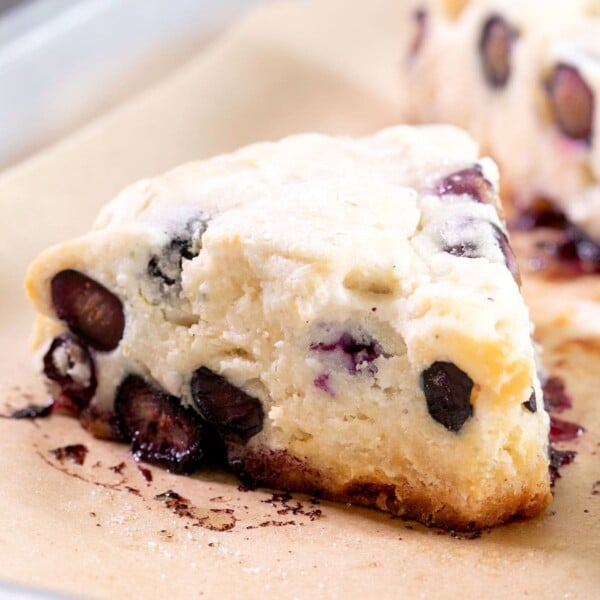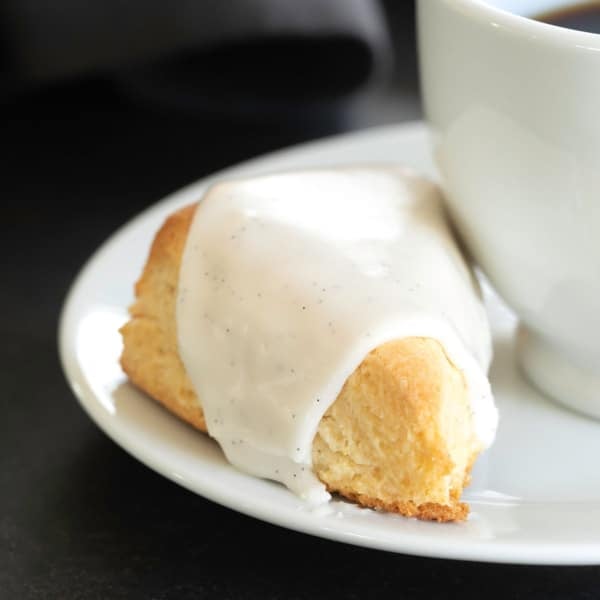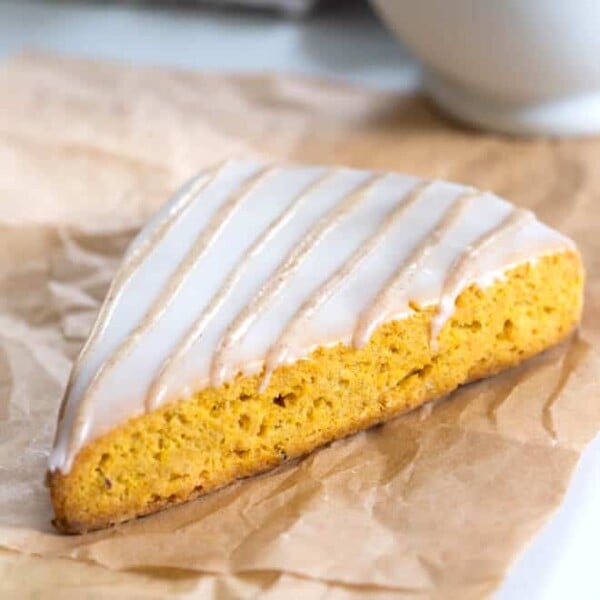This post may contain affiliate links. Please read our disclosure policy.
Build your own perfect gluten free scones when you check out this versatile master recipe, which makes quick work of the lightest, crispiest GF pastries. Add your favorite mix-ins!

Table of Contents
- Why you'll love this recipe for gluten free scones
- What are scones?
- Making gluten free scone mix in advance
- How to make gluten free scones
- Tips for shaping your raw gluten free scone dough
- Suggested gluten free scones flavor combinations
- Gluten free scones: ingredients and substitutions
- FAQs
- Master Gluten Free Scones Recipe
Why you'll love this recipe for gluten free scones
You'll love this master gluten-free scones recipe because it's versatile and allows you to add various mix-ins to create your own unique and delicious gluten-free scones.
The uncomplicated base mix, in fact, acts as the foundation of most of the scone recipes here on the blog. From this foundation, you can make them in whatever flavor you think makes the best gluten free scones.
The dry mix can be made weeks in advance, and stored in a jar in the refrigerator for weeks. That makes it quick and easy to whip up a fresh batch of scones whenever you're in the mood.
What are scones?
Scones are not biscuits. They're a light and airy pastry, but they're not technically flaky. They're absolutely a great idea for a gluten free breakfast, but they also make a great snack.
Unlike gluten free biscuits, which are usually savory, scones are usually sweet, and more crumbly than biscuits. That's not to say that, when made right, they're dry. They're just not layered and flaky like a rolled biscuit.
Flaky layers in pastries in general, gluten free and conventional, are achieved through rolling and folding, rolling and folding, a process called lamination. It's the basis of gluten free puff pastry, the most laminated of pastries.
The flakiness comes from cold cold pieces of butter, surrounded by and layered among dough, that expand when they meet the high heat of the oven. The dough holds the shape and the space created by that expansion.
Scones, on the other hand, are not rolled and folded. They're simply rolled and cut, chilled and baked. The pastry that results is almost crumbly—not because it's dry, but because it's light.
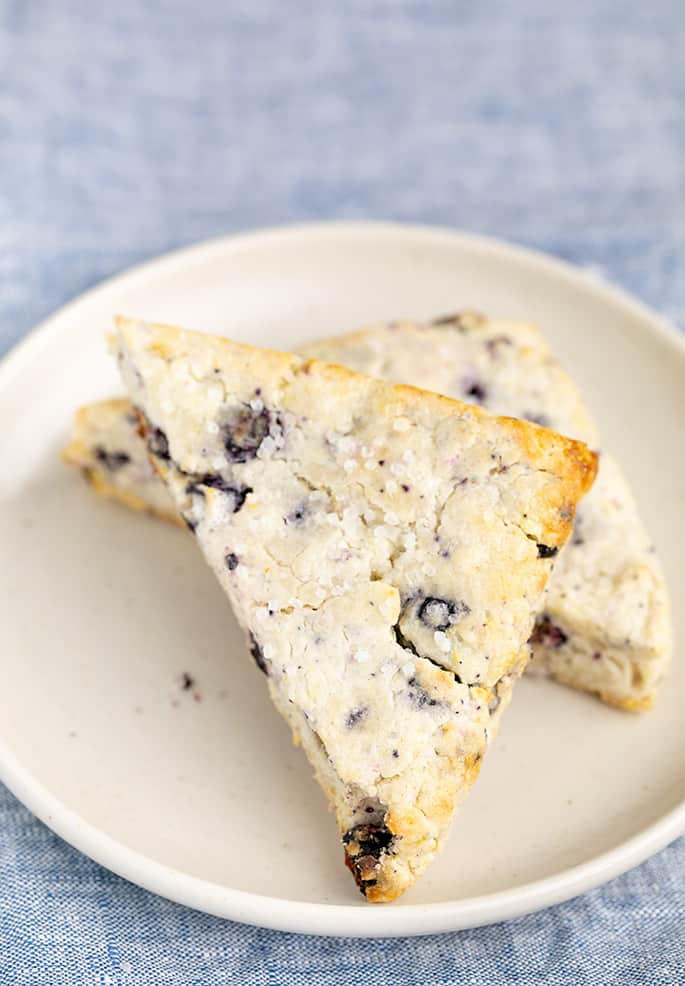
Making gluten free scone mix in advance
This gf scones recipe is written with a built-in “mix” so you can make it weeks in advance. You'll be that close to fresh, homemade sweet pastries any time.
Storing gluten free scone mix
I recommend storing your gf scones dry mix in a sealed container in the refrigerator, since buttermilk powder is best kept refrigerated. If you're using powdered milk instead of buttermilk powder, you can store your sealed container in the refrigerator or in a cool, dry pantry.
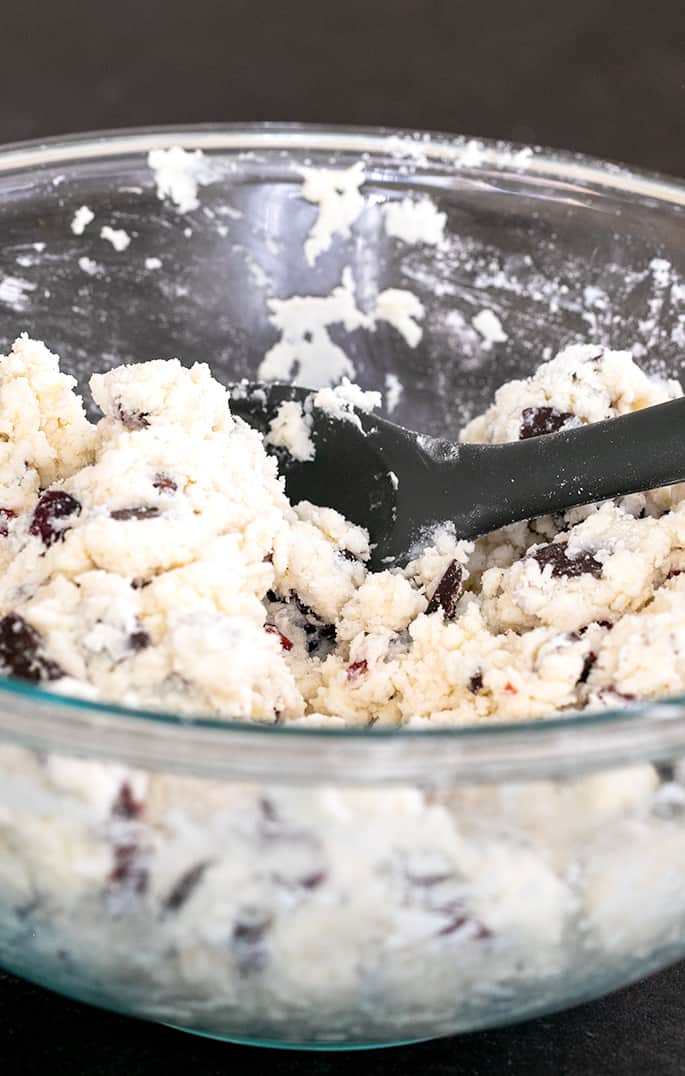
How to make gluten free scones
Repeat after me: cold dough, hot oven. All pastry is made using cold ingredients and butter (or another fat that's mostly solid at room temperature) that is in solid chunks that expand when they hit the sudden heat of the oven. It's that expansion that creates the characteristic texture of pastry.
Since grating cold butter tends to warm it up, it's best to grate the butter onto a piece of plastic wrap or parchment or waxed paper, then have it sit in the refrigerator for at least 10 minutes before adding it to the mix.
You don't have to use actual ice water, although it's the coldest type of water (colder than ice alone). You can just use water from a filtered pitcher you keep in your refrigerator, or tap water that you measure and chill completely before baking with it.
To make this recipe for gluten free scones:
- Make the dry mix by adding all of the dry ingredients (flour, xanthan gum, cornstarch, buttermilk or milk powder, baking powder, baking soda, salt, and granulated sugar) in a large mixing bowl. Whisk to combine.
- Add cold, shredded unsalted butter to the dry ingredients, and mix to combine. Some of the shredded butter will clump, which is fine (and actually what we want). Add your dry mix-ins here, too.
- Create a well in center of the dry ingredients with the butter and mix-ins, and mix in cold water just to bring together a relatively dry dough. If the dough is wet, your scones won’t hold their shape and rise the way we want them to.
- Shape the biscuits by turning out the dough onto a flat surface, and patting the dough into a square, then rolling it out lightly until it’s about 3/4-inch thick, and still roughly a square.
- Square the edges of the dough using a large knife or metal bench scraper. We want well-defined sharp edges.
- Cut the dough using one swift motion of the bench scraper at a time into 4 equal squares (2 cuts in a cross), then each of the 4 small squares into 2 triangles by cutting on a 45° angle. You should have 8 triangles.
- Brush the tops and sides of the raw scone triangles with some milk to help browning, and sprinkle with some coarse sugar for some sweet added texture. Chill the triangles until they’re firm for best results.
- Bake at 400°F until the scones are puffed up, pale golden and just firm to the touch. Don’t overtake or the bottoms will burn. Don’t underbake or the centers will be wet.
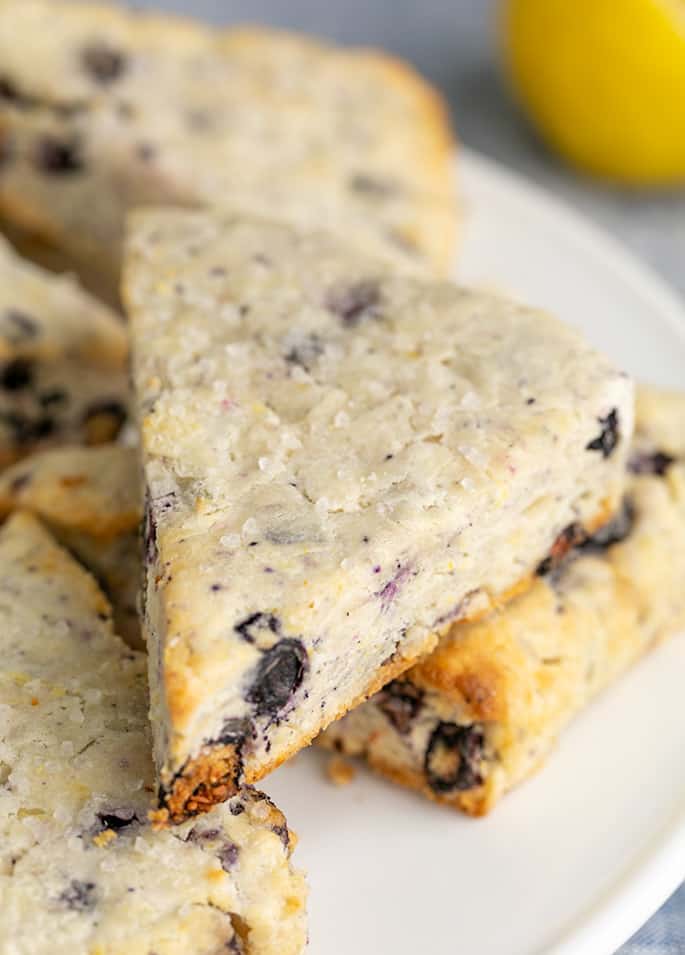
Tips for shaping your raw gluten free scone dough
Keep the dough cold; handle lightly
Be sure to handle the dough with as light a touch as possible to minimize the amount of contact the dough has with the warmth of your hands. Once the scones have been shaped, place them in the refrigerator or freezer to chill until truly firm.
Then, when you place the cold dough in a hot oven, the baking soda will be activated, but that's not all. The chunks of cold fat in the form of butter will expand quickly, pushing out the surrounding pastry dough and causing it to rise.
Blunt cut the pastry edges
I find that the sharper the cuts on the edges of your scones, the more readily they rise. Sharp cuts mean pastry dough that isn't compressed.
I use a metal bench scraper, which is also just a very handy tool to have. But a sharp chef's knife works well, too.
I would not recommend using a pastry cutter, which has a small wheel which will compress the pastry dough. If you have a metal pizza cutter with a very large wheel, you can try using that.

Suggested gluten free scones flavor combinations
The best part about using this master gluten free scone recipe is that it can be made with many flavor combinations. If you'd like to use a fresh or frozen berry, I recommend using our recipe for gluten free blueberry scones.
This recipe is for dried or self-contained pieces like chocolate chips and dried berries. Here are a few flavor combinations I suggest trying.
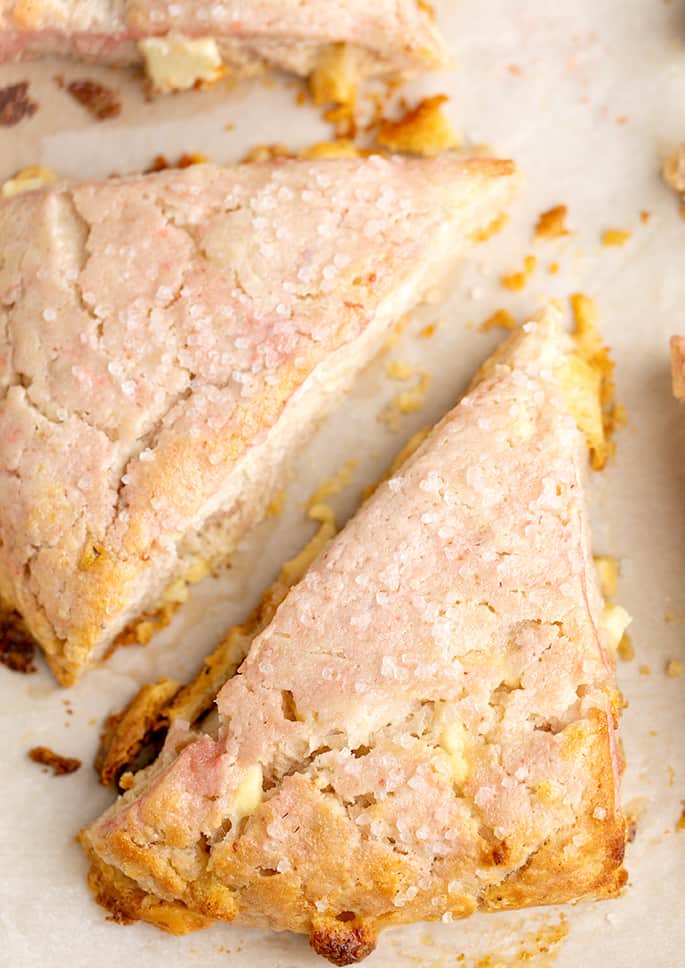
Strawberries and cream gluten free scones
Replace 3 tablespoons of the ice water in the recipe with homemade strawberry syrup. Use some syrup here, and then whip up a batch of our gluten free strawberry cupcakes. For mix-ins, use white chocolate chips, and brush the raw tops with a mixture of cream and strawberry syrup.
You see these beautiful, lightly pink-colored gluten free scones in some photos in this post (including just above). They're a family favorite!
Peanut butter and chocolate chip gluten free scones
For the mix-ins, use half chocolate chunks or chips, half peanut butter chips. You can even replace a tablespoon or two of the cornstarch with some powdered peanut butter.
Chocolate berry gluten free scones
Use half chocolate chunks or chips, half dried berries (cranberries, cherries, or blueberries). The combination I used in many of the photos and video in this recipe is half dried cranberries, half broken chocolate baking disks.

Lemon blueberry gluten free scones
For bright lemon blueberry flavor, add finely grated zest of one lemon to the dry ingredients, and replace one tablespoon of water with lemon juice.
Try using dried or freeze-dried blueberries as your mix-in, with or without some dark or white chocolate chips. The photo below is of these lemon blueberry gluten free scones, made with 1 ounce of freeze-dried blueberries.
Cherry almond gluten free scones
For mix-ins here, use a combination of roughly chopped or sliced raw almonds (almond slivers don't tend to have enough flavor and a less pleasant texture) with dried cherries. Add some ground cinnamon, too, to complement and enhance the flavors.
Orange cranberry gluten free scones
Similar to the instructions for lemon blueberry scones, add 1 tablespoon finely grated orange zest to the dry ingredients, and replace two tablespoons of ice water with freshly-squeezed orange juice (that's been strained of all pulp). Lightly sweetened, dried cranberries are your mix-ins here.
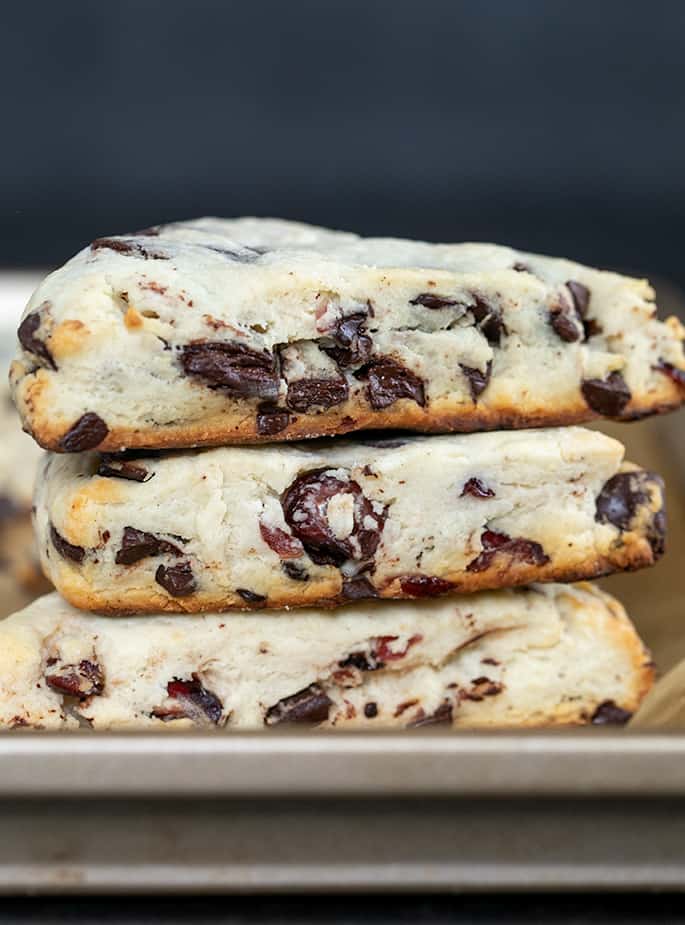
Gluten free scones: ingredients and substitutions
Gluten free, dairy free scones
The mix calls for a dairy powder, preferably buttermilk powder, which is what allows the scones to be made with cold water, not cold buttermilk. My favorite cultured buttermilk powder is made by Saco, and the powder stays fresh in the refrigerator for a long time after opening.
You can replace the powder with milk powder or even whey powder. If you're dairy-free, try replacing the buttermilk powder with powdered coconut milk powder.
To eliminate the butter, try replacing it with vegan butter. My favorite brands are Melt and Miyoko's Kitchen. I don't recommend Earth Balance buttery sticks for pastry, since it has more moisture and melts more quickly than butter.
If you're dairy-free, be careful about what mix-ins you use. Many will have dairy, so choose non-dairy pieces.
Corn free, gluten free scones
If you can't have corn, you can replace the cornstarch with another light, flavorless starch. I would try arrowroot powder, but potato starch might work well, too.

FAQs
No! Only gluten free scones, like these made with a gluten free recipe using gluten free flours, are made safe for those on a gluten free diet.
This recipe, as written, calls for a mix of Better Batter's original blend, cornstarch to lighten it, and powdered milk for richness. In place of all 3 of them, by weight, you can use our gluten free pastry flour blend.
You can store your gluten free scone mix in the refrigerator for at least 3 weeks (unless your powdered buttermilk is already kind of old when you use it).
No! Fresh berries release moisture during baking, so you need a separate gluten free blueberry scone recipe that is made to accommodate them.
You may have overmeasured your liquid, or under-measured your dry ingredients. Be sure to measure your dry ingredients, especially your gf flour blend, by weight to avoid an unbalanced mixture.
Did you add wet mix-ins to your scones mix? Did you add too much water? Or were your scones over-handled and not cold when you put them in the oven? All of those issues will cause spreading.
No! You can replace the powdered buttermilk with milk powder, if you prefer, but you need one powder or the other, even if you were to replace the water with milk. The powdered dairy adds richness without adding more liquid, and the recipe is balanced this way.
Your scones are ready when they have puffed and appear somewhat separated on the sharp-cut sides, and are beginning to brown on the edges. They should also be relatively firm to the touch when you press one gently in the center with a fingertip (enough that they resist gentle pressure).
Always make sure your oven is hot enough by using a separate oven thermometer, rather than relying on your oven's internal calibration. It's usually off by quite a bit!
In the United States, these sorts of crisp-tender, crumbly, lightly sweet pastries are called scones. In many other parts of the world, including England, what are called “scones” are made with much less butter and much less sugar. In fact, what we in the United States calls “biscuits” are usually called “scones” in the United Kingdom. And of course what we call biscuits are actually cookies in the U.K. The language I use is always American English, since that's all I know!

Master Gluten Free Scones Recipe
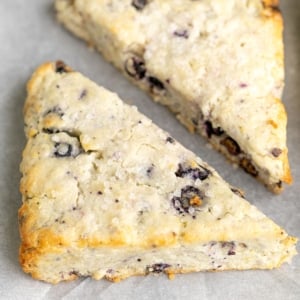
Ingredients
For the dry mix.
- 1 ¾ cups (245 g) all purpose gluten free flour blend, (I used Better Batter; please click thru for full info on appropriate blends), plus a bit more for sprinkling
- ¾ teaspoon xanthan gum, omit if your blend already contains it
- ¼ cup (36 g) cornstarch
- ½ cup (43 g) cultured buttermilk blend powder, (I use Saco brand); alternative: 1/3 cup (43 g) powdered milk
- 1 ½ teaspoons baking powder
- ¼ teaspoon baking soda
- ½ teaspoon kosher salt
- 2 tablespoons (24 g) granulated sugar
To make scones
- 1 (365 g) batch dry scones mix from above
- 6 tablespoons (84 g) unsalted butter, shredded and kept cold
- 1 cup mix-ins, See Recipe Notes
- ¾ cup (6 fluid ounces) cold water, iced (ice cubes don’t count in volume measurement)
- Cream or milk, for brushing (optional)
- Coarse sugar, for sprinkling (optional)
Instructions
To make the dry mix.
- In a medium-size bowl, place the flour, xanthan gum, cornstarch, buttermilk or milk powder, baking powder, baking soda, salt, and granulated sugar, and whisk to combine well.
- Store in an airtight container until ready to use. It’s best to store the mix in the refrigerator, especially if you’ve used buttermilk powder.
To make scones.
- Preheat your oven to 400°F. Line a rimmed baking sheet with unbleached parchment paper, and set it aside.
- In a large bowl, place the entire dry mix from the first step, and whisk to loosen.
- Add the shredded and chilled butter, and toss to coat the butter in the dry ingredients, breaking up any large clumps in the butter. Add the mix-in berries or chips, and toss to coat.
- Create a well in the center of the dry ingredients, add the cold water, and mix to combine. The mixture should come together and everything should be just moistened.
- Turn the dough out onto a lightly floured surface, and pat into a square, handling it as little as possible. Working quickly, roll out with a rolling pin until the square is about 3/4-inch thick.
- Press a metal bench scraper or other flat tool against the edges of the square to smooth any cracks in the dough and square the edges.
- Using a large knife or bench scraper, cut the dough into 4 equal squares, then each square into 2 triangles by slicing it in half width-wise.
- Place the triangles of dough about 1-inch apart from one another on the prepared baking sheet. Brush the tops with a bit of milk, and sprinkle with some coarse sugar, if you like.
- Place the baking sheet in the freezer for about 15 minutes, or until the scones are firm.
- Place the baking sheet with the chilled scones in the center of the preheated oven. Bake until the scones are puffed and firm to the touch, and just beginning to brown on the edges (about 20 minutes).
- Remove from the oven and allow to set briefly before serving warm or at room temperature.
Video
Notes
- Strawberries and cream: replace 3 tablespoons of ice water with 3 tablespoons strawberry syrup; mix in white chocolate chunks or chips; brush tops with mixture of cream and strawberry syrup.
- Chocolate peanut butter: half chocolate chunks or chips, half peanut butter chips
- Chocolate berry: half chocolate chunks or chips, half dried berries (cranberries, cherries, blueberries)
- White chocolate chips (mixed with dried berries, or another type of chip or chunk)
- Lemon blueberry: finely grated zest of one lemon, replace one tablespoon of water with lemon juice, dried or freeze-dried blueberries as mix-in.
Nutrition
Nutrition information is automatically calculated, so should only be used as an approximation.
